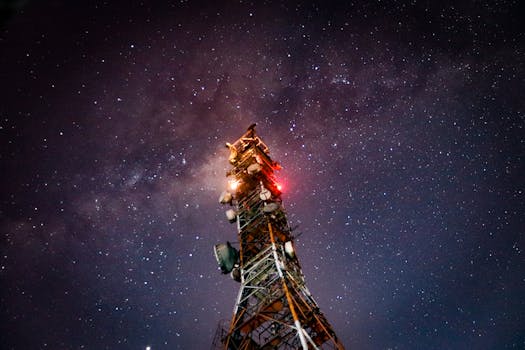
MEO Satellites: Revolutionizing Global Connectivity with Medium Earth Orbit Technology
MEO satellites, or Medium Earth Orbit satellites, are a type of satellite that operates in an orbit between 2,000 and 36,000 kilometers above the Earth’s surface. This orbit is significantly lower than the Geostationary Orbit (GEO) used by traditional satellites, which orbit at an altitude of approximately 36,000 kilometers. The lower orbit of MEO satellites allows for faster and more reliable connections, making them an attractive option for a wide range of applications, including telecommunications, navigation, and Earth observation.
The use of MEO satellites is becoming increasingly popular due to their ability to provide global coverage with fewer satellites than traditional GEO systems. This is because MEO satellites have a smaller footprint, or area of coverage, which allows for more targeted and efficient use of bandwidth. Additionally, MEO satellites are less prone to interference and signal degradation, resulting in a more stable and reliable connection.
How MEO Satellites Work
MEO satellites work by transmitting and receiving signals to and from Earth-based stations. The satellites are equipped with transponders, which are devices that amplify and re-transmit the signals. The signals are then transmitted back to Earth, where they are received by large antennas and distributed to the intended recipient. The entire process happens in a matter of milliseconds, allowing for near-real-time communication.
MEO satellites are often used in constellations, or groups of satellites that work together to provide global coverage. These constellations can consist of tens or even hundreds of satellites, each operating in a different orbit and providing coverage to a specific region of the Earth. By using multiple satellites, MEO systems can provide continuous coverage, even in areas where traditional GEO satellites may not be able to reach.
Applications of MEO Satellites
MEO satellites have a wide range of applications, including telecommunications, navigation, and Earth observation. In the field of telecommunications, MEO satellites are used to provide internet connectivity to remote or underserved areas. They are also used to provide backup connectivity in the event of a disaster or outage, ensuring that critical communications systems remain operational.
In the field of navigation, MEO satellites are used to provide location information and timing signals. These signals are used by a wide range of devices, including GPS receivers, smartphones, and autonomous vehicles. MEO satellites are also used in Earth observation applications, such as monitoring weather patterns, tracking climate change, and detecting natural disasters.
Future of MEO Satellites
The future of MEO satellites looks bright, with many companies and organizations investing heavily in the development of new MEO systems. One of the most significant advancements in MEO technology is the development of new propulsion systems, which allow satellites to maneuver and change orbit more efficiently. This has enabled the development of more complex and sophisticated MEO systems, which can provide even faster and more reliable connections.
In addition to advancements in propulsion systems, there are also significant advancements being made in the field of satellite manufacturing. New materials and techniques are being developed, which allow for the creation of smaller, lighter, and more efficient satellites. This has reduced the cost of launching and operating MEO satellites, making them more accessible to a wider range of organizations and individuals.




